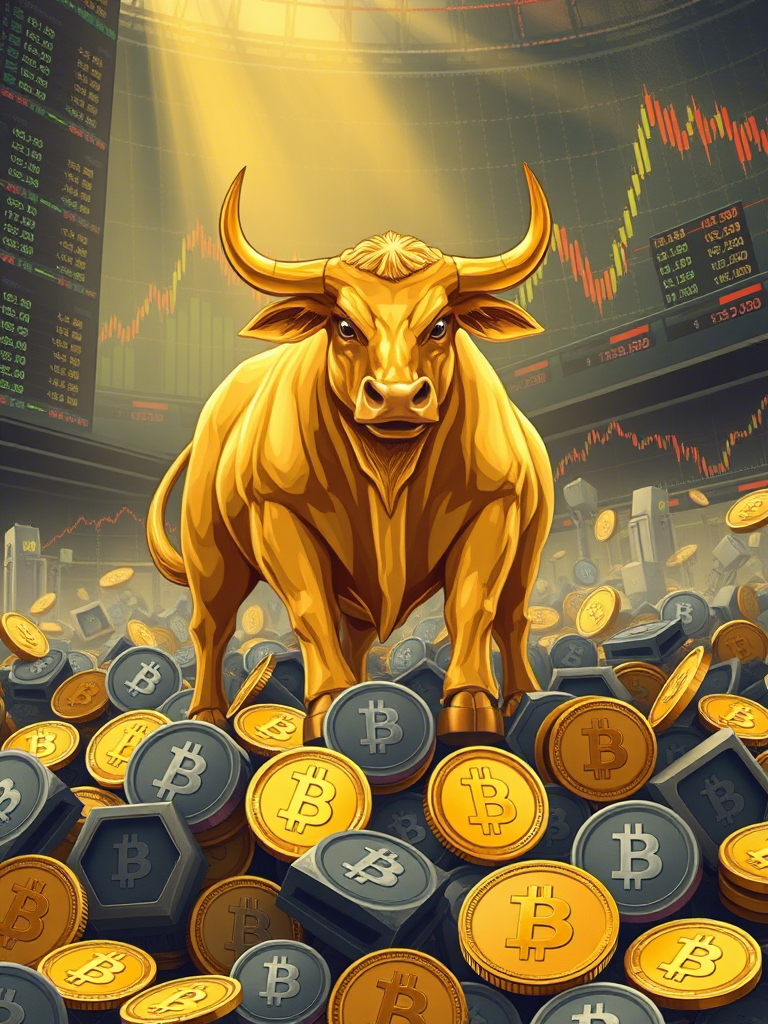In recent months, while the global economy faces uncertainty, investors have flocked to safe-haven assets like gold, but surprisingly, Bitcoin has not benefited from this trend. According to JPMorgan analysts, gold is seeing huge demand as a safe bet in times of macroeconomic turmoil, but Bitcoin is missing out.
What Does “Safe-Haven” Mean?
A “safe-haven” asset is one that people turn to when markets are shaky or uncertain. Think of it as a financial lifeboat during a storm. Traditionally, assets like gold have been considered safe havens. During times of global instability—whether it’s inflation, political tension, or a financial crisis—investors often seek to protect their money by moving it into gold, as it tends to hold value over time.
The Gold Surge
In 2025, gold saw massive inflows of money. In just the first quarter of the year, global gold exchange-traded funds (ETFs) took in $21.1 billion, with a significant chunk coming from China and Hong Kong. This suggests that gold is not just a safe bet for traditional investors but also attracting attention from the booming Asian markets. Additionally, speculative investors are buying more gold futures, which are contracts to buy gold at a future date for a set price, indicating increased interest in gold as a safe-haven investment.
Bitcoin’s Struggles
Bitcoin, which is often referred to as “digital gold” due to its similar store-of-value characteristics, isn’t seeing the same positive momentum. According to JPMorgan, Bitcoin has failed to draw the kind of safe-haven demand that’s pushing gold prices up. Bitcoin futures trading is declining, and for the past three months, Bitcoin ETFs have experienced outflows—meaning investors are pulling money out, rather than putting it in.
Why is this happening? JPMorgan points out that Bitcoin’s role as a hedge against inflation or global economic uncertainty is being challenged. While gold’s safe-haven status continues to grow stronger, Bitcoin’s narrative as a safe bet seems to be under pressure. The shift away from Bitcoin in favor of gold suggests that investors are still more comfortable with the long-standing stability of gold over the relatively volatile nature of Bitcoin.
What Does This Mean for Bitcoin’s Future?
The report also highlights a critical price point for Bitcoin: $62,000. This is considered the “production cost” for Bitcoin, meaning it’s the price at which Bitcoin miners break even. If Bitcoin drops below this level, there could be pressure on miners, which might lead to selling, further driving the price down. Currently, Bitcoin is trading at around $84,300, but its failure to attract safe-haven flows like gold could make future price movements more uncertain.
Why Should You Care?
For anyone in the crypto space—whether you’re trading, investing, or just learning about the market—this is important because it highlights the challenges Bitcoin is facing in proving its role as a hedge against global uncertainty. If Bitcoin can’t tap into the same demand for safety that gold is enjoying, its position in the broader financial system might be weaker than we thought.
So, if you’re watching the market closely or holding onto Bitcoin, this is a reminder that crypto is still trying to carve out its place in the world of traditional finance. Gold has centuries of history backing its reputation as a safe haven, and Bitcoin is still struggling to win over skeptics, especially in times of crisis.
Understanding these shifts will help you make more informed decisions about your investments and keep you ahead of the game as you navigate the volatile world of crypto.



